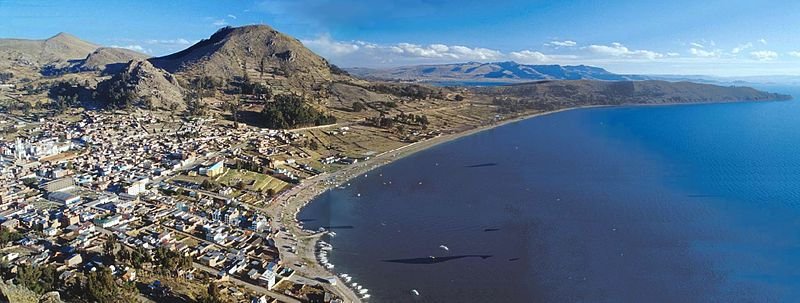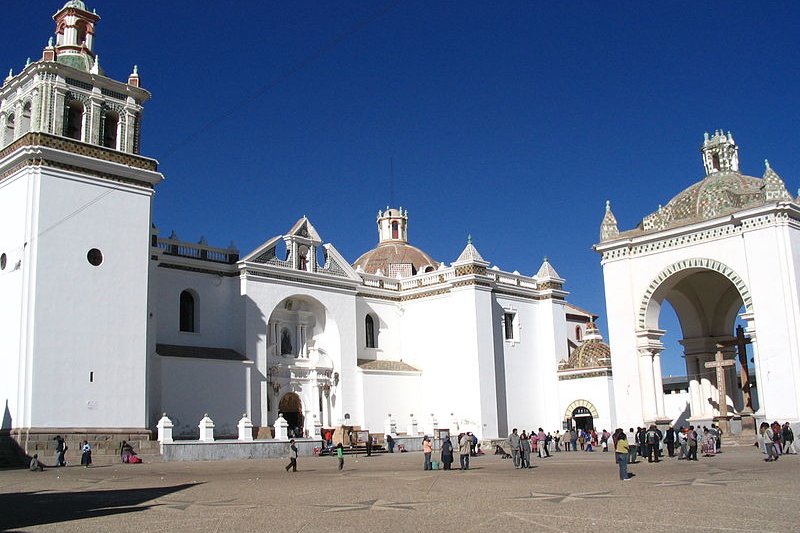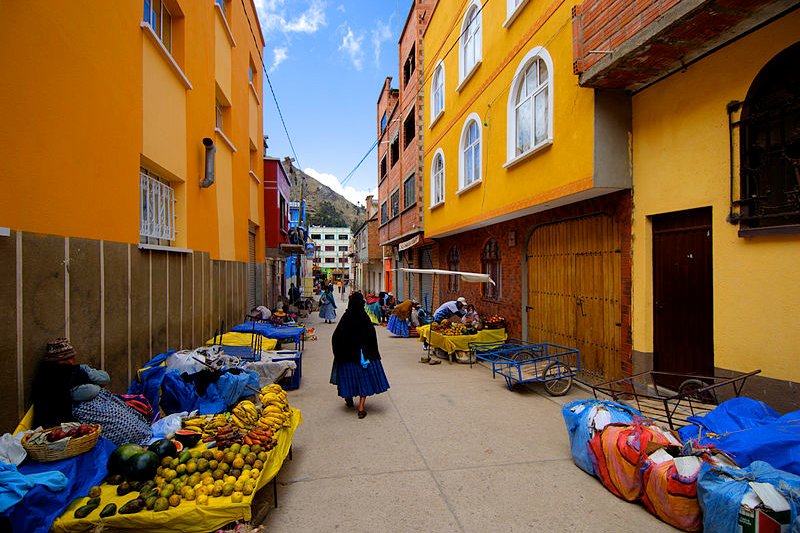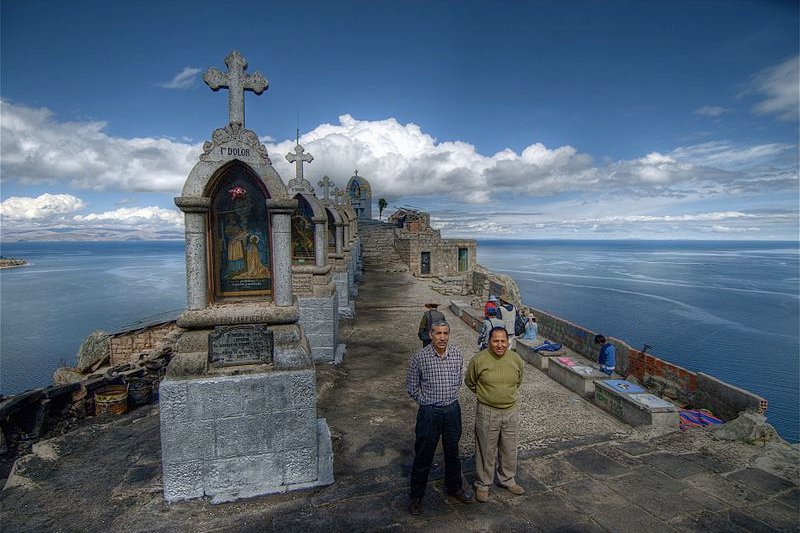 Panoramic view of Copacabana, Bolivia
Panoramic view of Copacabana, BoliviaSource: https://commons.wikimedia.org/wiki/File:Copacabana_Bolivia.jpg
Author: Bjork

Copacabana is a town on the shore of Lake Titicaca in Bolivia. It is located at a height of 3,841 m (12,602 ft) above sea level. The town covers 346.5 sq km (133.8 sq mi) and has a population of around 6,000 people (2012 estimate).
The name Copacabana is popularly believed to derive from "kota kahuana" which means "view of the lake" in the Aymara language. Historian Mario Montaño Aragón however believe it comes from "kotakawana", the name of the Andean god of fertility. This is the original Copacabana name that was later adopted by Copacabana in Rio de Janeiro, Brazil.
Copacabana dates back to the Inca period. There was an Inca shrine here, probably for the worship of Kotakawana. During that time, Copacabana was an island on Lake Titicaca. It had a main shrine as well as numerous smaller shrines in which the Incas performed ceremonies and rituals.
The Spaniards arrived on the Island of Titicaca in 1534. They forced the conversion of the local population from their indigenous believes to embrace the Roman Catholic faith, and Dominican missionaries set up a mission here.
 Basilica of Our Lady of Copacabana, Copacabana, Bolivia
Basilica of Our Lady of Copacabana, Copacabana, BoliviaSource: https://commons.wikimedia.org/wiki/File:Church_of_copacabana.jpg
Author: Anakin

 Street in Copacabana
Street in CopacabanaSource: https://commons.wikimedia.org/wiki/File:Colorful_street_in_Copacabana_October2007.jpg
Author: Ville Miettinen

The most important site at Copacabana is the Basilica of Our Lady of Copacabana. It sits on a sacred knoll that was known as the Inca Temple of the Sun. The site was sacred even during pre-hispanic times and became a sacred Catholic site upon the arrival of the Spaniards in the 16th century. It is one of the two main sacred Catholic pilgrimage sites in Bolivia, the other being the Virgin of Urkupiña near Cochabamba.
The image of Our Lady of Copacabana is said to have been created by the grandson of the Inca ruler Manco Kapac in 1582. He had it placed in Copacabana as the tutelar protectress of the community. Today the Basilica of Our Lady of Copacabana is the site of an annual indigenous feast days held on 2 February and 6 August.
 Shrines on a hill overlooking Lake Titicaca in Copacabana, Bolivia
Shrines on a hill overlooking Lake Titicaca in Copacabana, BoliviaSource: https://commons.wikimedia.org/wiki/File:Copacabana_Lake_Titicaca_October2007.jpg
Author: Ville Miettinen

Visiting Copacabana
There are buses from La Paz to Copacabana for Bs.16. The journey takes about four hours. The bus takes you to Tiquina Strait, where you get down from the bus, board a ferry (fare Bs.1.50), then return to your bus which is ferried across by barge. There are also buses from Puno in Peru, also taking about four hours.Places of Interest in Copacabana
- Basilica of Our Lady of Copacabana
- Lake Titicaca
 Latest updates on Penang Travel Tips
Latest updates on Penang Travel Tips
 Discover with Timothy YouTube Channel
Discover with Timothy YouTube Channel
 PG Food Channel
PG Food Channel
 Learn Penang Hokkien YouTube Channel
Learn Penang Hokkien YouTube Channel
 SojiMart Videos
SojiMart Videos
Latest from Discover with Timothy: Gurney Bay - what to see and do there
About this website

Hello and thanks for reading this page. My name is Timothy and my hobby is in describing places so that I can share the information with the general public. My website has become the go to site for a lot of people including students, teachers, journalists, etc. whenever they seek information on places, particularly those in Malaysia and Singapore. I have been doing this since 5 January 2003, for over twenty years already. You can read about me at Discover Timothy. By now I have compiled information on thousands of places, mostly in Peninsular Malaysia and Singapore, and I continue to add more almost every day. My goal is to describe every street in every town in Malaysia and Singapore.
Robbie's Roadmap
- Episode 1: Robbie's Journey to Financial Freedom
- Episode 2: Lost in America
- Episode 3: The Value of Money
- Episode 4: The Mentor
- Episode 5: The Thing that Makes Money
- Episode 6: The walk with a Billionaire
- Episode 7: The Financial Freedom Awakening
- Episode 8: Meet Mr Washington
- Episode 9: The Pizzeria Incident
Copyright © 2003-2024 Timothy Tye. All Rights Reserved.


 Go Back
Go Back